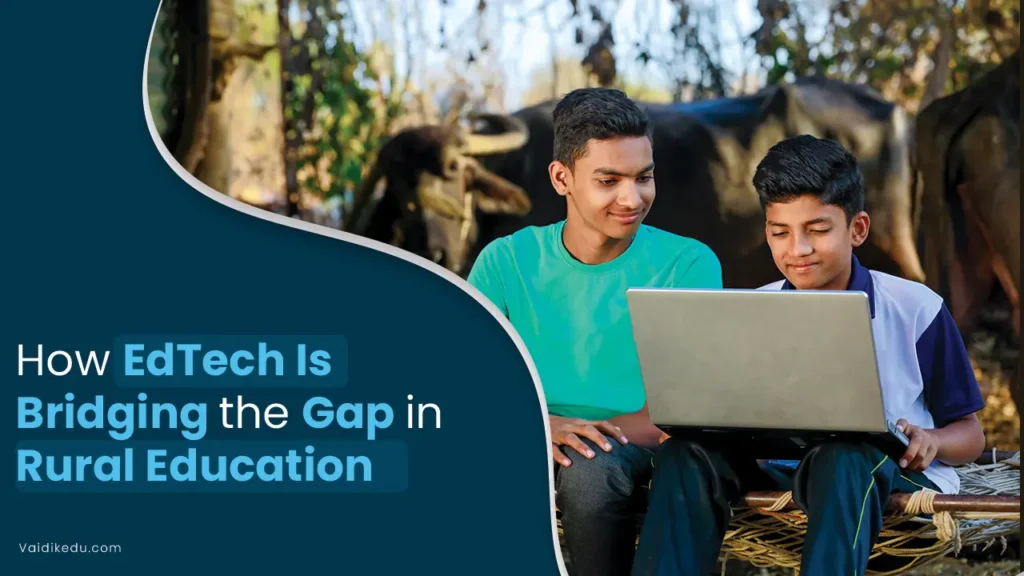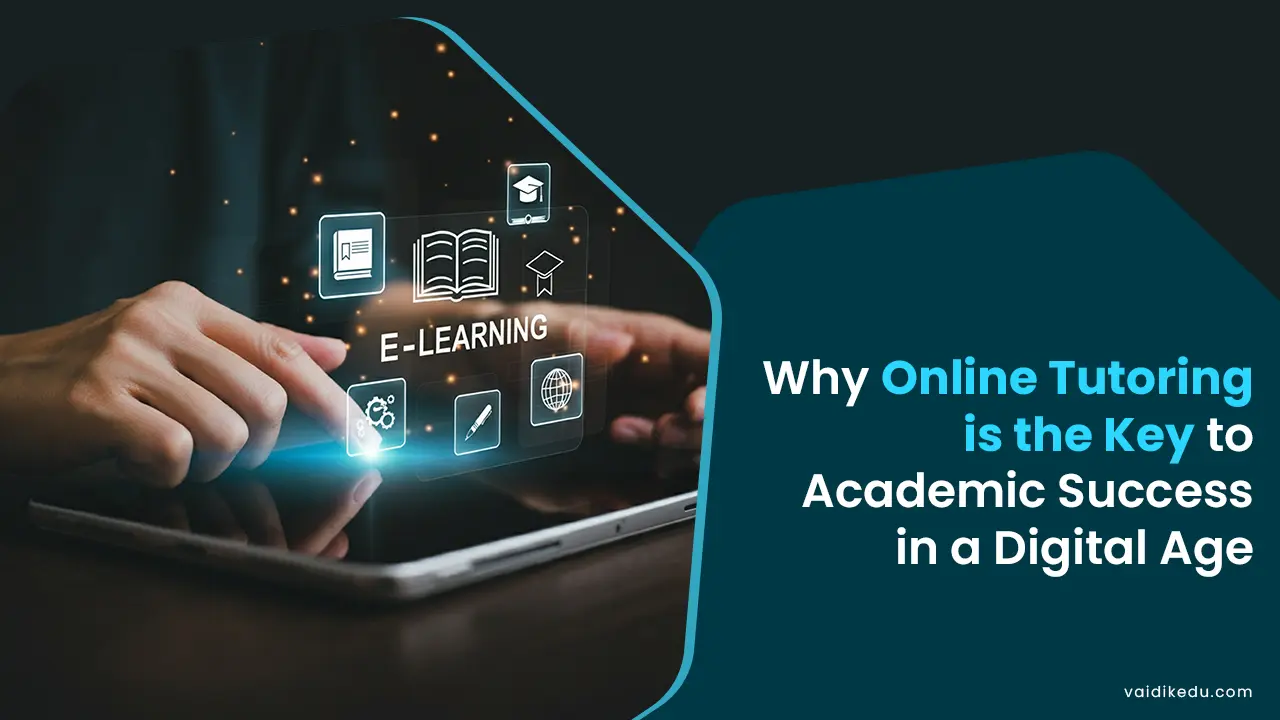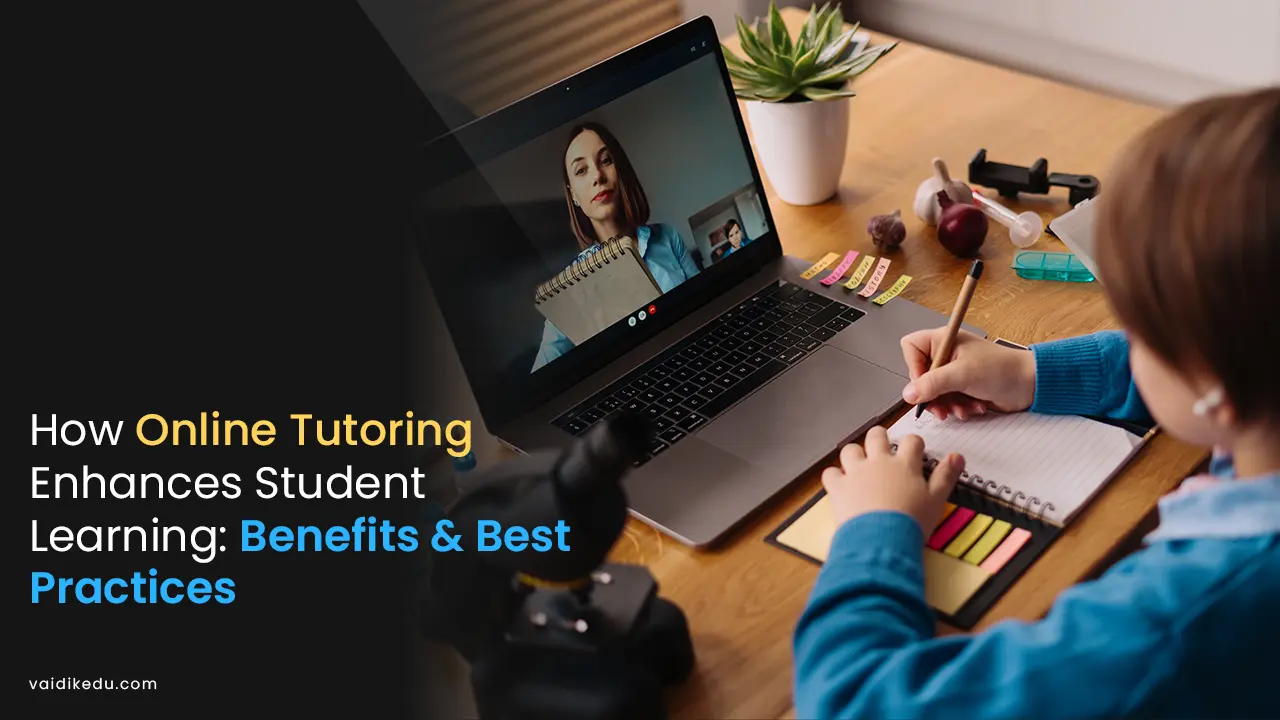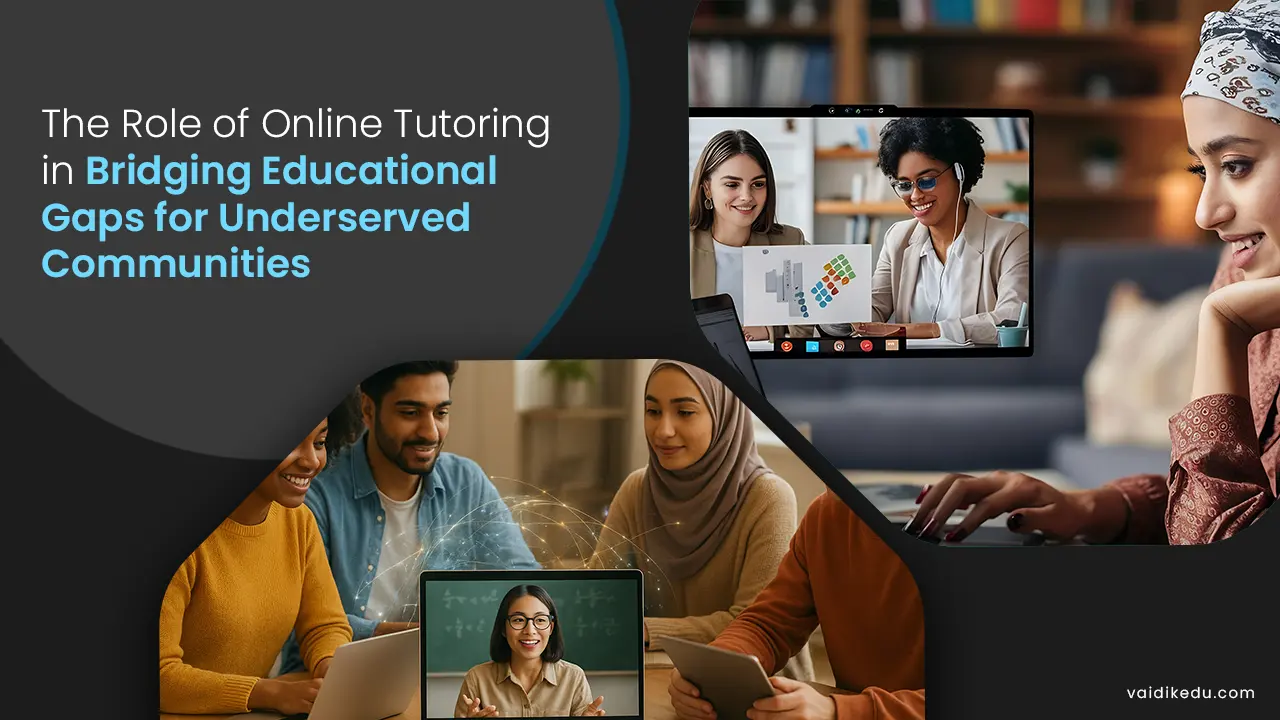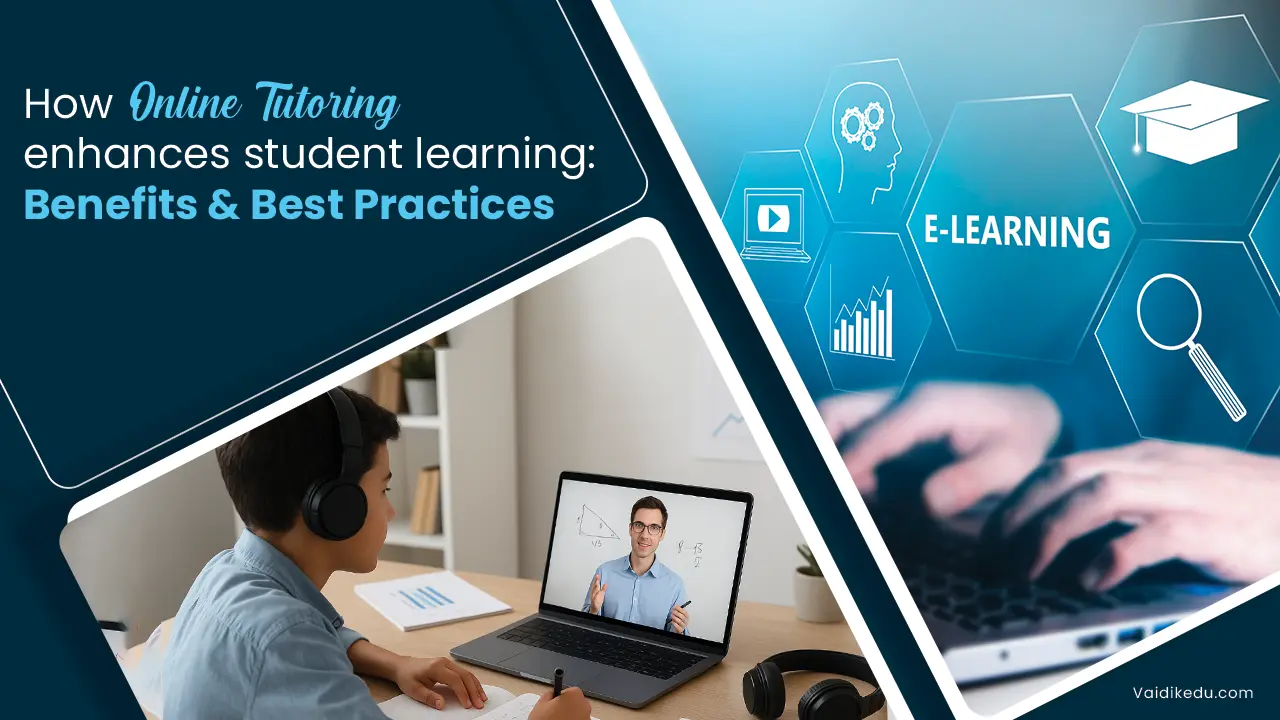Education grants keys to transforming lives and building resilient societies. But access to these promises goes unreached for millions of children in rural areas. A decaying infrastructure, an absence of qualified teachers, and a poor supply of modern resources contribute to many of the struggles rural education systems face.
These contribute to the widening gap between their urban counterparts regarding educational outcomes. Physical obstacles marked by the school expedition and the distance further alienate many students from their academic experiences.
EdTech has come into play as a disruptive force that has a promise to decimate rural education. With the utilisation of digital tools, contemporary pedagogical practices, and remote learning characteristics, EdTech enables students, even from the world’s remotest regions, to enjoy quality education.
From interactive video lessons to AI-based personalized learning platforms, the challenge is uncompromising in equity and equitability of opportunity, providing the rural youth a chance to dream bigger.
This article walks us through the power of EdTech to make a difference, break barriers, and create learning opportunities such that no child is left behind in the fabled pursuit of knowledge.
Challenges in Rural Education:
These are a few challenges confronting rural education through which quality learning processes are undermined. The between difficulties create a gaping gap in learning urban and rural equations. Highlights of these issues consist of:
- Lack of infrastructure: Some rural entrepreneurs run schools without the basic elements of a school a proper classroom with tables and chairs or even a library. An unstable power supply and limited Internet access make teaching this method more challenging.
- Shortage of qualified teachers: Because of lower salaries, lack of amenities, and remoteness, rural schools find it challenging to attract and retain qualified teachers. The teacher-to-pupil ratio is often insufficient, resulting in overcrowded classrooms and a consequent lack of individual attention.
- Language Barriers: Most students in rural communities speak regional or local dialects, whereas reading materials and school instruction are primarily in one or more national or international languages. This language gap creates barriers because of related accessibility and understanding problems.
- Economic issues: Those living in rural organisations face financial hardship in meeting educational demands with books, learning materials, and uniforms. Many are underage and have quit school to engage in child labour to be of some help to their families.
- Cultural And Social Factors: Systemic factors include cultural norms, such as the lack of preference for children of a specific gender attending school. Other contributing factors include early marriages and child labour.
This means immediate and innovative intervention is needed to confront these systemic barriers to rural education.
Role of EdTech in Bridging The Gap:
EdTech has emerged as a potent tool to tackle challenges in rural education. EdTech empowers students and educators in off-the-beaten-path areas to overcome barriers and access quality education. Here are the primary manners in which EdTech is bridging the gap:
- Access To Quality Content: Digital platforms allow students to access precise, high-quality educational content relevant to their curricula, even in remote places. Video lectures, interactive tutorials, and e-books provide finished and engaging learning experiences.
- Personalised Learning: The EdTech platform uses AI and machine learning to create personalized learning pathways. This approach allows students to proceed based on their learning pace by focusing on their strengths and weaknesses.
- Overcoming Geographical Barriers: Virtual classrooms and online courses allow students to connect with peers and educators worldwide. Remote learning has paved the way for continued education in areas with minimal physical schooling.
- Teacher Training And Support: EdTech platforms develop professional development programs for educators and provide needed teaching resources. With this, teaching staff in remote areas get up-skilled with an up-to-date approach.
- Multilingual & Inclusive Learning: Most EdTech products usually support using local languages so learners can access their native language of learning. Including subtitles, translations, and options for accessibility allows further inclusion in various capacities.
- Cost-Effective Solution: Digital tools are minimizers of providing physical infrastructure, and the approach of schools in spending supplies favouring low-cost education. Therefore, the dynamic use of these free-or-close-sourced EdTech platforms has opened knowledge to all.
The Successful Examples:
Numerous EdTech programs have positively impacted rural education. Here are some shining examples.
- BYJU And Khan Academy: These platforms provide high-quality, interactive video lessons and personalized learning. They also have mobile apps for smartphones, so students in remote areas with even basic devices can access educational content from these two platforms.
- The Internet Saathi Program by Google: This program adopts a training methodology to enhance digital literacy for rural women. By teaching these digital skills to women, the program indirectly enables children to have full access to technology-driven learning.
- Pratham Education Foundation: Diagnosing educational challenges among rural children and looking for solutions via varied digital tools to heighten literacy and numeracy. Their tablet-based learning programs offer engaging and localized content in regional languages.
- EkStep Foundation: EkStep is an open platform that provides free content aligned with different curricula. Teachers and parents can access this resource to reinforce what happens in traditional educational settings.
- Teach For India’s TFIx Program: TFIx assists social entrepreneurs in creating localized EdTech solutions that fit rural contexts’ requirements. Doing this ensures that solutions are contextually relevant and address specific community challenges.
These examples reveal how EdTech comes in and sways to improve conditions and show the need to scale these interventions to sustain a more just world.
Best Solutions Possible:
A strong collective effort will put EdTech and its long-term integration into rural education fully into action. Suggested strategies for the future are as follows:
- Improving Internet Connectivity And Infrastructure: To guarantee access to online learning, broadband and mobile networks extending to remote areas must be established. Governments and the private sector should help provide affordable and accessible Internet solutions.
- Promoting Digital Literacy: Training to inculcate fundamental digital skills will enhance the effective utilization of EdTech tools by learners, teachers, and parents. Community centres and local NGOs should play a significant role in conducting digital literacy workshops.
- Localization: As EdTech platforms create unique types of content suitable for effective learning in specific regions’ languages and cultural traditions, partnerships with local educators and stakeholders will allow community-relevant, pertinent solutions to blossom.
- Public-Private Partnerships: Collaboration between the state, tech companies, and non-profits could combine resources and experiences to grow EdTech initiatives. Such collaborations could also help tackle issues related to funding and innovation sustenance.
- Integration of Hybrid Learning Model: A combination of traditional and digital learning practices allows students without or with little access to devices or the Internet to participate. Such hybrid models provide flexibility and facilitate accommodating different learning situations.
- Preserving Business Operating And Human Rights: To alleviate some of the financial burden on lower-income families, the government should subsidize the devices and costs of internet service. To provide equity in education, it would be essential to support access to EdTech platforms for free or at a low cost.
Continuous Monitoring And Evaluation: Setting up a tracking system to give feedback on the effectiveness of existing EdTech projects would be useful for going back. Feedback from users, especially teachers and students, will be of great help to further improvements.
Frequently Asked Questions
EdTech has the potential to improve quality because it allows for personalized learning experiences, interactive content, and online learning led by experts. It also provides teachers with a myriad of methodologies, such as blended learning, that meet the specific needs of rural learners to encourage engagement and improve outcomes.
The main hurdles are unreliable connectivity, a lack of laptops, low digital literacy skills, and financial issues. If necessary, tangible steps can manifest only through an outthrust towards investment, infrastructure, and teacher and student training in rural settings.
The long-term benefits expected would include access to education for rural students, improved education outcomes, better job prospects, increased social mobility, and empowerment of rural communities through lifelong learning and teamwork in aligning skills development with demands in the modern economy.



